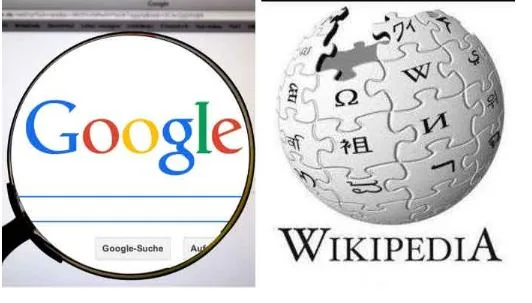What Role Technology Plays in Power Efficiency
In an era where energy costs and sustainability goals drive major industrial decisions, power efficiency has become a central focus across every sector. Whether in manufacturing plants, data centers, or energy production facilities, optimizing how electrical power is generated, distributed, and consumed can make a measurable difference in both performance and profitability.
At the heart of this shift is technology — not just as a tool, but as an enabler of smarter, more resilient energy systems. From intelligent automation and data-driven analytics to IoT connectivity and renewable integration, modern Industrial Control Solutions are redefining how industries manage and conserve energy.
Below, we explore how these innovations are transforming power efficiency and what that means for the future of industrial operations.
1. Smarter Power Management Through Intelligent Automation
Traditional electrical systems often relied heavily on manual oversight. While effective to a point, human monitoring couldn’t match the precision or speed of today’s digital solutions. Modern automation systems — built around PLC (Programmable Logic Controllers) and SCADA (Supervisory Control and Data Acquisition) platforms — have revolutionized this space.
These technologies continuously collect and analyze operational data from switchgear, control panels, and MCCs, enabling real-time adjustments to optimize power usage. For example, if a motor is drawing excess current or a system is running inefficiently, automation software can instantly trigger corrective actions or alerts, preventing waste and potential damage.
In industrial environments, automation ensures that equipment runs only when needed and at the appropriate load. The result is improved energy distribution, fewer inefficiencies, and a significant reduction in downtime — all contributing to measurable energy savings.
2. The Power of IoT and Smart Grids
The integration of the Internet of Things (IoT) has elevated power management to an entirely new level. Smart sensors and meters now provide granular insights into how power flows across a facility, from high-voltage switchgear down to individual devices.
Smart grids use this data to balance supply and demand dynamically. They can reroute power automatically, detect faults faster, and even predict when components are likely to fail — allowing maintenance to happen before costly breakdowns occur.
For large-scale operations, IoT connectivity allows facilities to track energy use across multiple sites in real time. Managers can compare performance, detect anomalies, and implement energy-saving protocols based on accurate, data-driven insights.
This transparency is key to energy optimization — you can’t improve what you can’t measure. IoT and smart grid technologies provide the visibility needed to make informed, strategic energy decisions.
3. Variable Frequency Drives (VFDs) and Energy-Efficient Equipment
One of the simplest yet most powerful technologies for improving power efficiency is the Variable Frequency Drive (VFD). These devices regulate motor speed and torque to match operational demands, avoiding unnecessary energy consumption.
Without VFDs, motors typically run at full speed even when partial operation would suffice. By adjusting frequency and voltage based on load, VFDs reduce power draw and mechanical stress, leading to lower energy bills and longer equipment lifespan.
When combined with energy-efficient motors, transformers, and modern switchgear systems, VFDs form the foundation of a smarter power infrastructure. Upgrading older components to high-efficiency models can yield energy savings of 10–30% across a facility — often with a return on investment within a few years.
4. Data Analytics and Predictive Energy Insights
In modern facilities, data is as valuable as electricity itself. The ability to collect, analyze, and act on energy data is transforming how organizations manage power.
Energy analytics platforms take continuous readings from meters, panels, and devices to identify inefficiencies that might otherwise go unnoticed. Over time, this data builds a detailed profile of energy consumption, helping teams pinpoint exactly where power is being wasted — whether it’s due to underloaded equipment, poor power factor, or outdated infrastructure.
By integrating machine learning algorithms, these systems can even predict future energy demand and suggest optimal load distribution strategies. For instance, an analytics system might recommend running certain equipment during off-peak hours to reduce demand charges or balancing power loads across multiple feeders to prevent overload.
The insights from data analytics not only save energy but also support smarter capital planning and asset management.
5. Renewable Integration and Energy Storage Systems
As industries move toward cleaner operations, renewable energy integration is becoming an essential part of power efficiency. Advanced switchgear, automatic transfer switches (ATS), and energy storage systems now allow seamless transitions between grid and renewable sources such as solar or wind.
When coupled with intelligent control systems, these technologies maintain power stability, even when renewable output fluctuates. Battery storage systems capture excess energy for use during peak demand, helping to flatten load curves and reduce dependence on the main grid.
For facilities with high reliability requirements — such as data centers and manufacturing plants — renewable integration ensures not just efficiency but also resilience. The combination of clean energy, storage, and smart controls builds a foundation for sustainable, uninterrupted operation.
6. The Human Element: Engineering Smarter Systems
While advanced technologies are essential, human expertise remains the cornerstone of power efficiency. Designing and implementing efficient electrical systems requires engineering insight — understanding not just the components but how they interact under real-world conditions.
Experienced electrical engineers design systems that optimize every detail: bus configurations, circuit protection, panel layouts, and control logic. They ensure compliance with standards like UL 508A and UL 891, while tailoring each project for its specific load requirements and environmental conditions.
Technology provides the tools, but engineering applies them with precision and purpose — transforming potential into performance.
Conclusion
Technology is no longer a supporting element of power efficiency — it is the driving force behind it. From automation and IoT-driven control systems to data analytics, low voltage switchgear, and renewable integration, every innovation moves us closer to a future where power is cleaner, smarter, and more reliable.
For industries seeking to modernize, investing in these technologies is more than a cost-saving measure; it’s a strategic decision that enhances performance, sustainability, and operational resilience.
As the demand for energy efficiency continues to grow, the collaboration between advanced technology and skilled engineering will remain the key to powering the future efficiently — one smart system at a time.





